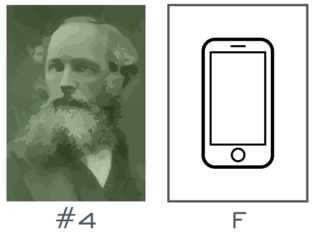James Clark Maxwell

Wireless communication devices such a mobile phones work because an electromagnetic wave, propagating through the air at the speed of light, can induce an electrical signal in an aerial. If this electromagnetic wave can be controlled then it can be used to communicate information over vast distances almost instantaneously, and the ability to do this has radically changed the world we live in.
The theory governing how electromagnetic waves propagate was first proposed by Edinburgh-born physicist James Clark Maxwell (1831-1879).
Maxwell’s major breakthrough was to recognize electricity, magnetism, and light as manifestations of the same phenomena. He beautifully encapsulated these ideas mathematically in what have now become known as Maxwell’s equations, and the predictions these provide were later observed experimentally by Heinrich Hertz. This discovery then lead to the first radio telegraph transmissions being demonstrated by Guglielmo Marconi, kick-starting the remarkable wireless global communications revolution that today enables us to access vast amounts of information via the internet from almost anywhere or talk face-to-face with each other when on different sides of the planet.
In addition to the theory of electromagnetism, Maxwell made many other important contributions to science, including a statistical description governing aspects of how gasses move, advances in colour perception and photography, and detailed analysis of the frameworks used in bridge engineering.
The work on colour perception is also directly relevant to modern mobile phone technology as the display screens produce full colour images using only red, green and blue light – an effect first demonstrated publically by Maxwell himself at the Royal Institution in 1861.
Maxwell’s discoveries also helped lay the foundations for such hugely important fields as special relativity and quantum mechanics and his scientific influence is considered by many physicists to be as great as that of Isaac Newton and Albert Einstein.
Want to learn more?
Courses in electromagnetism form a core part of all physics degree programmes at Heriot-Watt (3rd year course B29EM Electromagnetism and 4th year course B20ES Electromagnetism and Laser Physics).
Additionally, during summer internships there are many opportunities to get to grips with cutting edge research exploiting electromagnetic waves (especially in the form of laser radiation) than span many different regions of the spectrum, from microwaves through visible light and on to X-rays.